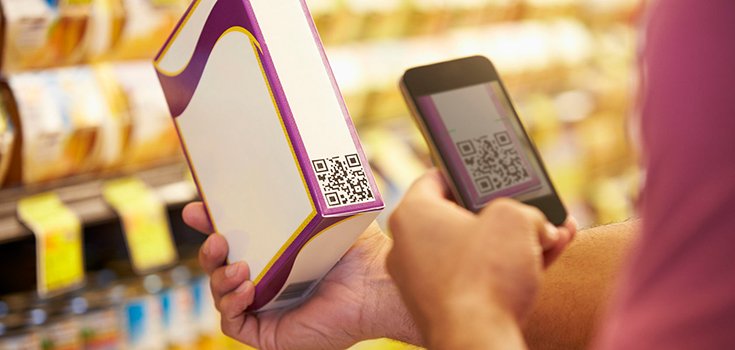Big Food Trickery? SmartLabels to Act as ‘Real’ GMO Labeling

Imagine strolling down your grocery store’s aisles, and you pick up a food that has been packaged with some deceptive labeling that says it is ‘all natural’ or ‘made with wholesome ingredients.’ You want to purchase only healthy, non-GMO food, along with countless others. But the labeling is unclear. This is exactly what the Grocery Manufacturer’s Association (GMA) wants consumers to feel – lost.
The Grocery Manufacturers Association is a trade association of the food industry, representing the world’s largest branded food, beverage and consumer product companies. It is also largely represents a group of food producers who are against GMO labeling, keep consumers in the dark about what’s in the food.
SmartLabel to Give Food Info, but Bypass GMO Labels
Though making a simple ‘verified, non-GMO’ label appear on every food package would cost about one cent for food manufacturers, they are instead counting on consumers to be too lazy, too busy, or too confused to scan a ‘smartlabel’ – one of the latest techniques used by the industrial agricultural paradigm and mega food companies who don’t want you to know that they are putting genetically modified ingredients in your food. Yeah, they want to incorporate it, but they expect everyone to go around scanning every product in a supermarket? I think not.
The GMA launched their new initiative aimed at “satisfying both consumers and food producers in the fight over whether to label foods with genetically modified ingredients,” but even with 30+ companies of literally thousands agreeing to participate in the SmartLabel initiative, you’ll have to have a smart phone and lots of extra time on your hands to figure out if you’re eating GMOs.
When a consumer scans the QR code on their smart phone, they will be taken to a ‘detailed product information page,’ through Google, Yahoo, or Bing, or be directed to the company’s website. You’ll have to do this for each and every product you are considering purchasing – or you can just purchase products that clearly say non-GMO verified. That is until the GMA finds a way to say that this label, already being used on thousands of products by companies who are not trying to dupe consumers, is somehow unfair. You know that’s coming next.
The idea wouldn’t be a bad one IF it were implemented in addition to GMO labeling and all the other information available on food products. But alas, that is not the case.
The GMA attests that all (30) of these SmartLabel landing pages will be organized in a similar format with a consistent look across products, but it is completely voluntary. By the end of 2017, 20,000 food products are expected to use the QR coding system, but if consumers keep voting with their wallets, about half of those companies will go belly up for trying to keep us from knowing when we are eating toxic food.
The GMA is expecting Congress to pass a uniform national voluntary labeling standard.
Food QR codes are discriminatory against the elderly and low-income, minority and rural populations, who may not have access to smart phones or computers. It would be easy for companies to just mark their packages ‘this product contains GMO’ – but of course that isn’t going to happen.
These companies know that consumers don’t want GM food. At least 86% of Americans want mandatory GM labeling. In the meantime, we can keep ditching their toxic food.
Additional Sources:
